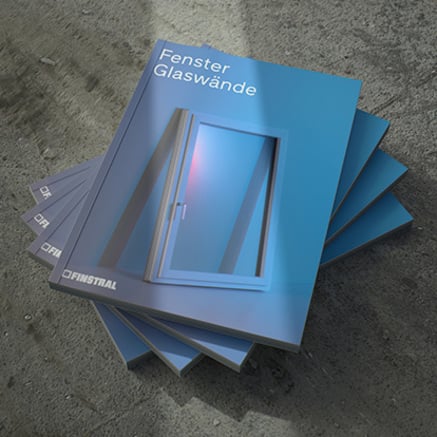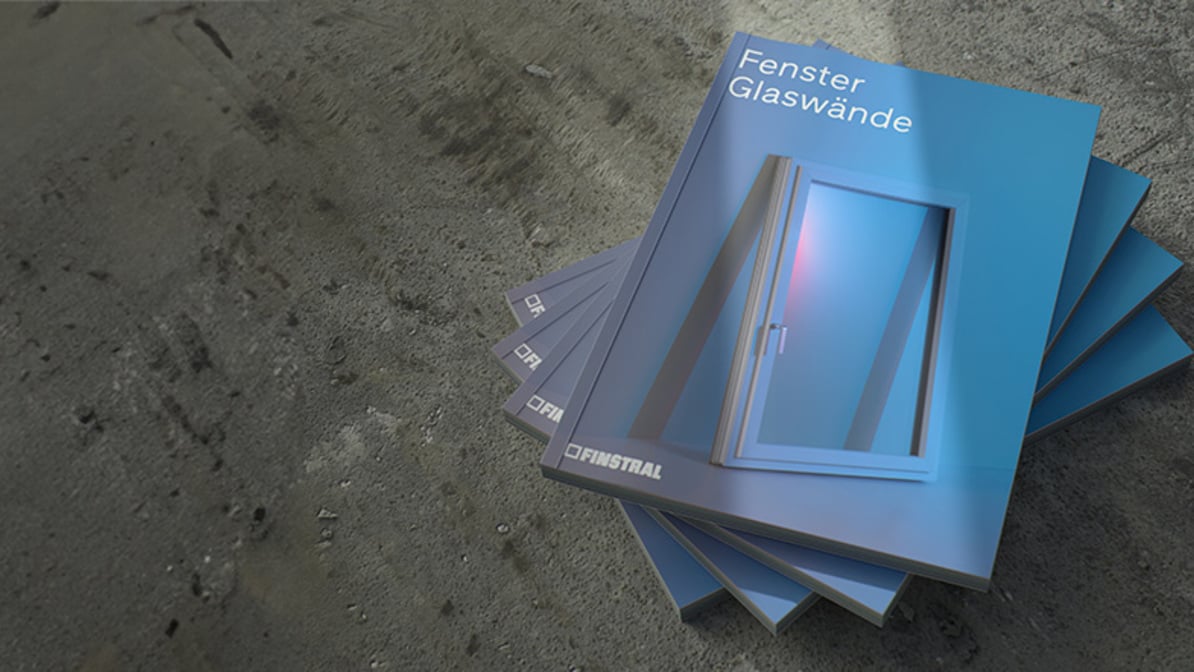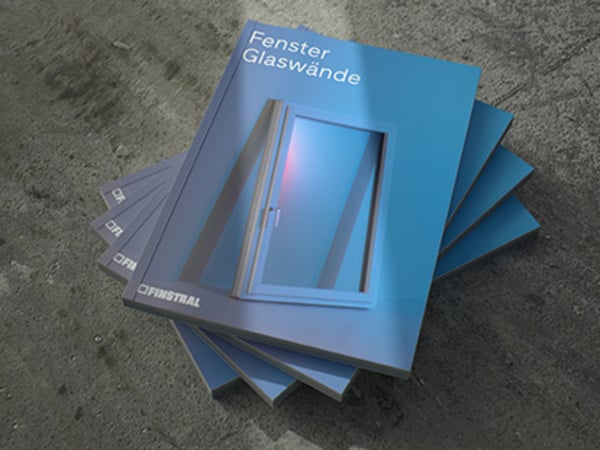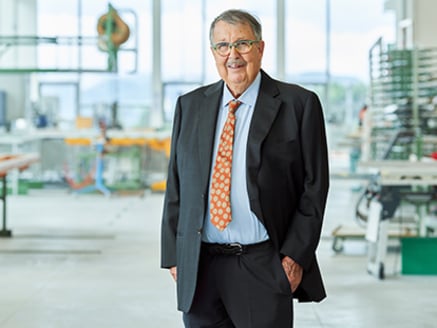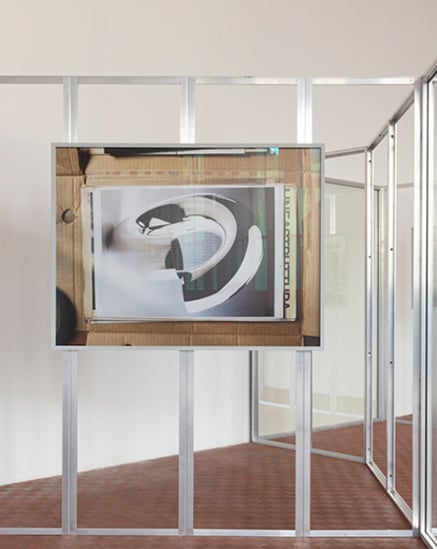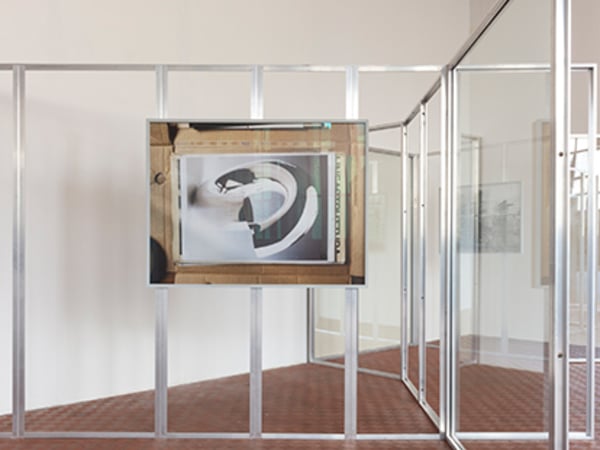Historic look, state-of-the-art functionality.
Window replacement in an office building of the “Generali” insurance company in Turin.
Finstral replaces over 150 elements in a historic office complex – and preserves the building’s characteristic style in the process.
Half past eight in the morning, Piazza Solferino, Turin: hustle and bustle everywhere on the streets. Car horns honking, a Vespa snaking through the traffic jam, people hurrying to their next appointment – lost in thought as they pass the buildings around them. On the other hand, Florian Oberrauch from the Finstral management team and his colleague Ivano Talmon are standing, relaxed, in front of a large office building owned by the world’s fifth largest insurance company, “Generali”, as the inscription with the lion statue high up on the façade shows – the trademark of the insurance company and the symbol of the Republic and City of Venice. (The insurance company’s headquarters are in Trieste, a city in the Friuli-Venezia Giulia region.) Only Oberrauch and Talmon notice what hardly anyone else sees: the historic building has been freshly refurbished – with brand new windows.
“And that was precisely the aim of the project”, explains Ivano Talmon, who oversaw the refurbishment from start to finish. The building’s façade, roof and windows were to be modernised, i.e. functionally brought up to date. The aim was to preserve its imposing style, not least because it had been categorised by the city of Turin as a “characteristic historical building”, a status similar to that of a monument. The windows in particular manifest this, with their round arches, panels and glazing bars. The large glass surfaces with fanlights are up to 4.5 metres in height. The brown frames and roller shutters also characterise the look of the historic façade.
The principal, CEL SpA, was therefore looking for a window manufacturer that could both fulfil the historical context aesthetically and supply modern functional elements – and found what it was looking for with Finstral. “Our range is so consistently modular that almost anything can be combined with everything else. Each functional feature goes with every aesthetic variation. We are therefore well prepared for a job like this”, says Florian Oberrauch with satisfaction. On the interior the frames are made of easy-care, high-quality PVC with a white satin finish. On the exterior, on the other hand, is an aluminium trim in matt chocolate brown that perfectly matches the colour of the façade. The Classic-line frame shape, with its slightly bevelled profile edges, echoes the characteristics of the old windows. “Finstral was also able to supply the attached glazing bars, round arches and flattened panels in the window doors in matching colours, as we have all of these in our range. Only the roller shutters were not available from the outset in the exact colour and design. So we customised them for this job”, says Ivano Talmon, for whom meeting special requests for large projects is part and parcel of everyday life.
Half past eight in the morning, Piazza Solferino, Turin: hustle and bustle everywhere on the streets. Car horns honking, a Vespa snaking through the traffic jam, people hurrying to their next appointment – lost in thought as they pass the buildings around them. On the other hand, Florian Oberrauch from the Finstral management team and his colleague Ivano Talmon are standing, relaxed, in front of a large office building owned by the world’s fifth largest insurance company, “Generali”, as the inscription with the lion statue high up on the façade shows – the trademark of the insurance company and the symbol of the Republic and City of Venice. (The insurance company’s headquarters are in Trieste, a city in the Friuli-Venezia Giulia region.) Only Oberrauch and Talmon notice what hardly anyone else sees: the historic building has been freshly refurbished – with brand new windows.
“And that was precisely the aim of the project”, explains Ivano Talmon, who oversaw the refurbishment from start to finish. The building’s façade, roof and windows were to be modernised, i.e. functionally brought up to date. The aim was to preserve its imposing style, not least because it had been categorised by the city of Turin as a “characteristic historical building”, a status similar to that of a monument. The windows in particular manifest this, with their round arches, panels and glazing bars. The large glass surfaces with fanlights are up to 4.5 metres in height. The brown frames and roller shutters also characterise the look of the historic façade.
The principal, CEL SpA, was therefore looking for a window manufacturer that could both fulfil the historical context aesthetically and supply modern functional elements – and found what it was looking for with Finstral. “Our range is so consistently modular that almost anything can be combined with everything else. Each functional feature goes with every aesthetic variation. We are therefore well prepared for a job like this”, says Florian Oberrauch with satisfaction. On the interior the frames are made of easy-care, high-quality PVC with a white satin finish. On the exterior, on the other hand, is an aluminium trim in matt chocolate brown that perfectly matches the colour of the façade. The Classic-line frame shape, with its slightly bevelled profile edges, echoes the characteristics of the old windows. “Finstral was also able to supply the attached glazing bars, round arches and flattened panels in the window doors in matching colours, as we have all of these in our range. Only the roller shutters were not available from the outset in the exact colour and design. So we customised them for this job”, says Ivano Talmon, for whom meeting special requests for large projects is part and parcel of everyday life.
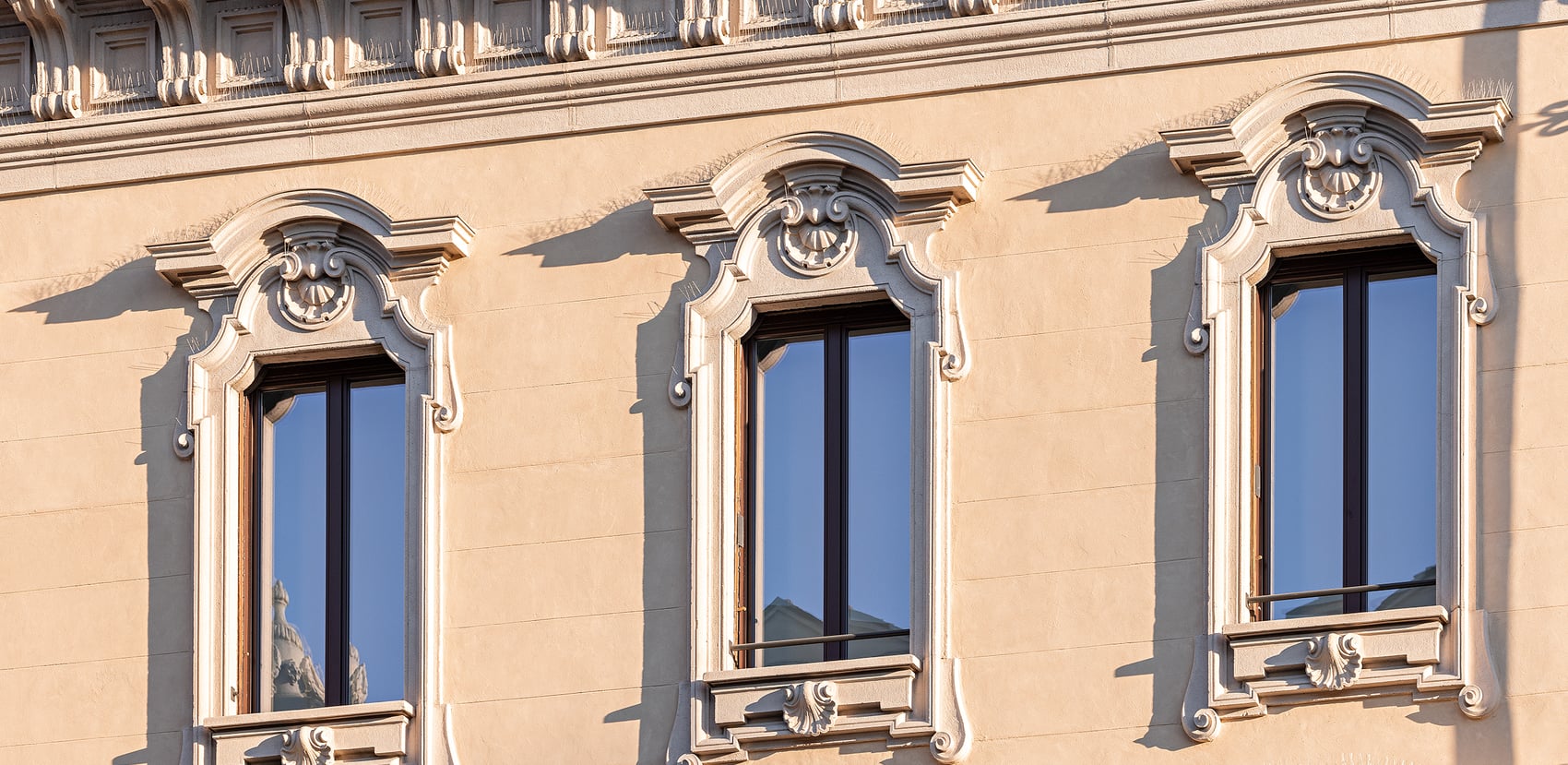
Aluminium window frames in matt chocolate brown.
“But a ‘mere’ historic appearance is not enough for new windows”, emphasises Florian Oberrauch. Functionally, the present-day requirements for insulation, soundproofing and tightness had to be met. No problem for Finstral, whose systems are among the most modern in Europe: all profiles have centre seals. All seals are not only plugged in, but also extruded and corner-welded to ensure airtightness. Not only are setting blocks used to affix the insulation glass in the sash frame, but all is always bonded to form a permanently rigid unit. And the sashes are always reliably drawn and held tightly into the frame by at least four roller mushroom head fittings. This means that they will remain low-maintenance and reliable for decades. The particularly high frames of this building were also fitted with reinforcing steel inserted into the profile for additional dimensional stability. All in all, these design details ensured the best insulation values in terms of heat/cold, noise and damp, as you would expect from modern window elements.
And how are the windows inserted into the wall? Quite simply, yet at the same time in an exceptionally innovative way – using the Finstral installation method that is ideally suited to the project and is based upon replacing the window on an existing frame. “In practice we experience surprises time and again – and have to adapt our approach to the installation method accordingly”, explains Finstral project manager Ivano Talmon. “In the Generali building, we were faced with an extremely interesting installation situation, one that we had never seen before. A second, newer surrounding frame with a sash had already been mounted on the original frame – presumably some 50 years ago. We therefore first had to remove the sash together with the surrounding frame that was fitted at the time, in order to access the first frame, which was integrated into the masonry and not visible from the outside. Fortunately, it was in such good condition in all places that we were able to use it as a frame for every window, without any problems. This made replacing the windows a simple task. The rooms were quickly ready for use again, as the replacement was carried out quickly, without dust or dirt. The windows simply had to be cleared.”
And how are the windows inserted into the wall? Quite simply, yet at the same time in an exceptionally innovative way – using the Finstral installation method that is ideally suited to the project and is based upon replacing the window on an existing frame. “In practice we experience surprises time and again – and have to adapt our approach to the installation method accordingly”, explains Finstral project manager Ivano Talmon. “In the Generali building, we were faced with an extremely interesting installation situation, one that we had never seen before. A second, newer surrounding frame with a sash had already been mounted on the original frame – presumably some 50 years ago. We therefore first had to remove the sash together with the surrounding frame that was fitted at the time, in order to access the first frame, which was integrated into the masonry and not visible from the outside. Fortunately, it was in such good condition in all places that we were able to use it as a frame for every window, without any problems. This made replacing the windows a simple task. The rooms were quickly ready for use again, as the replacement was carried out quickly, without dust or dirt. The windows simply had to be cleared.”
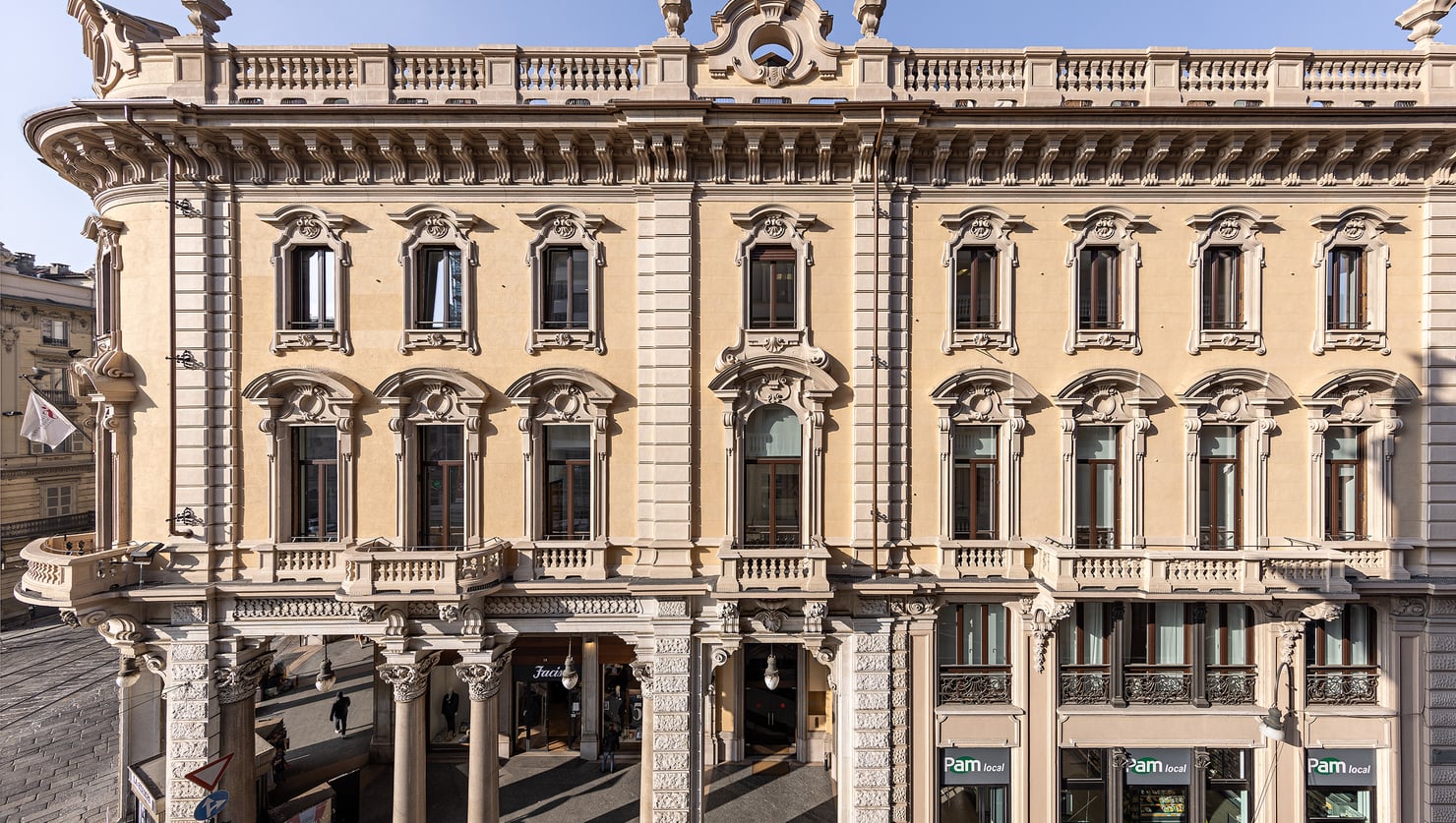
Columns, scrollwork and a slightly yellowish tone for the façade: all typical of Turin!
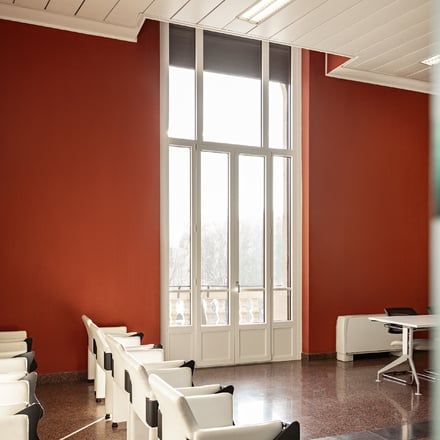
The window door and large fanlights reach a considerable height, up to 4.5 metres.
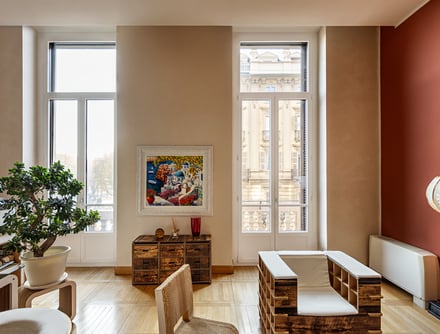
The window doors and fanlights with their white PVC frames create a pleasant ambience in the interior.
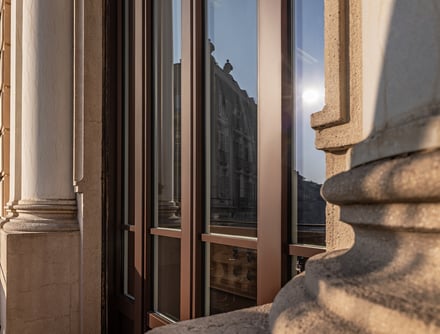
Aluminium frame in Classic-line design.
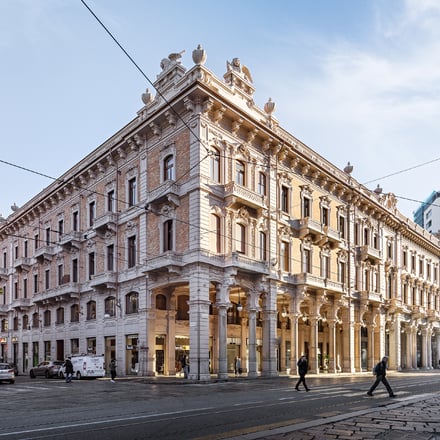
The historic building in all its glory.
And where were the new elements stored? “There wasn’t much space available”, says Ivano Talmon. “We were only able to use an inner courtyard and part of the car park. We therefore delivered the elements in phases and drew up a monthly schedule so as to coordinate everything in the best possible way.” Transporting the elements to the respective rooms also went smoothly. “There was even scaffolding on the outside of the building that had been erected for renovating the façade”, recalls Florian Oberrauch with a smile. “We didn’t need it, however. It would have been unsuitable for some of the particularly large window elements anyway. Instead, we got the elements to the upper floors via the entrances and balconies in the inner courtyard – scaffolding would only have got in the way.”
Overall, the project was a success: aesthetically, the historic look was preserved – and functionally, everything is to the latest standards. And, by using the old frame as an installation frame, the new windows were put in place quietly, quickly and unobtrusively – secretly, so to speak. Florian Oberrauch and Ivano Talmon are satisfied: “We’re renovating something that you can’t see”, laughs Oberrauch. “But you can feel it”, emphasises Talmon. “After all, the windows are now perfectly sealed, there are no draughts in the offices and it’s all quiet.”
Overall, the project was a success: aesthetically, the historic look was preserved – and functionally, everything is to the latest standards. And, by using the old frame as an installation frame, the new windows were put in place quietly, quickly and unobtrusively – secretly, so to speak. Florian Oberrauch and Ivano Talmon are satisfied: “We’re renovating something that you can’t see”, laughs Oberrauch. “But you can feel it”, emphasises Talmon. “After all, the windows are now perfectly sealed, there are no draughts in the offices and it’s all quiet.”
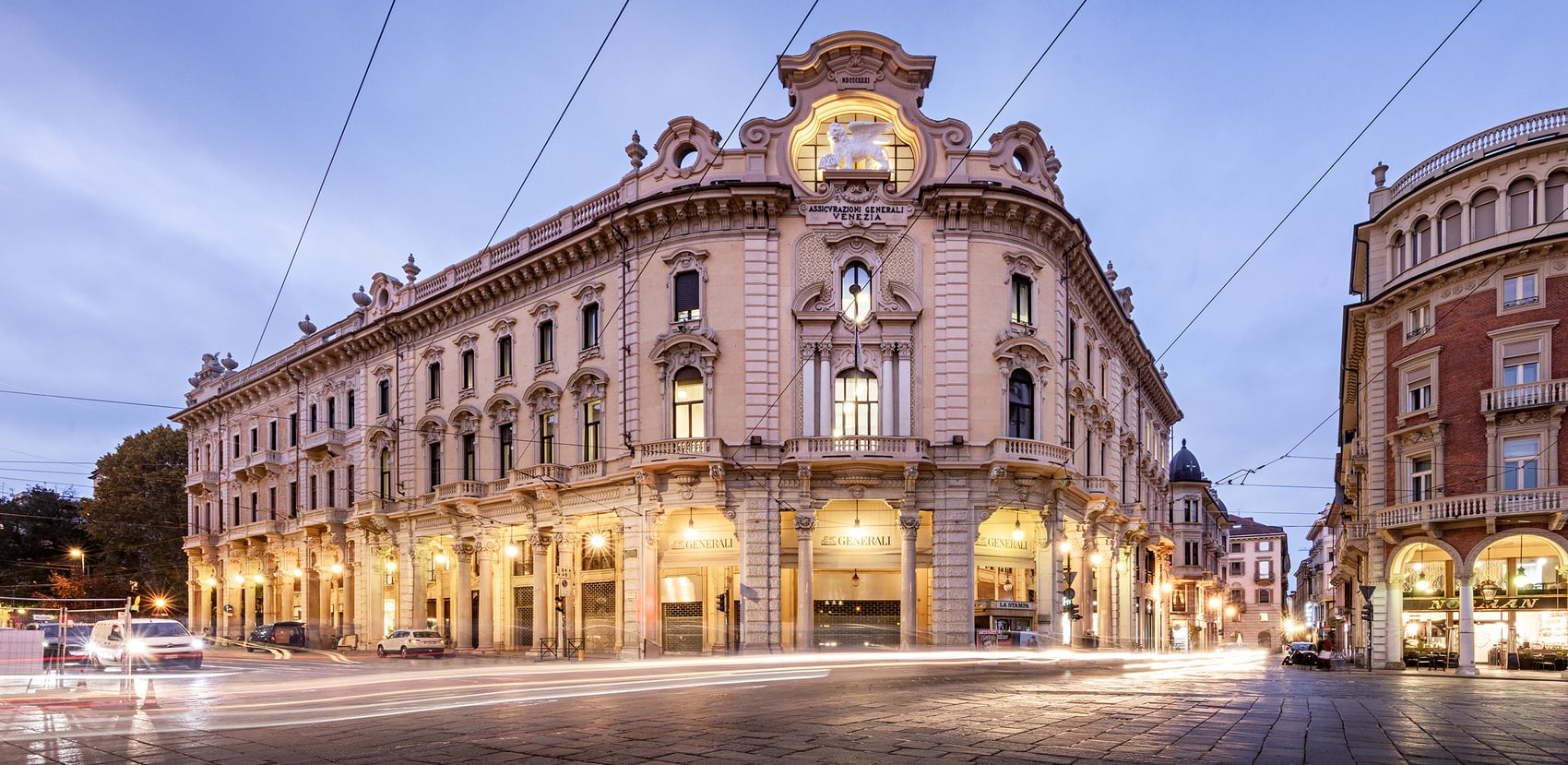
The insurance company’s trademark, the lion, is enthroned in the centre – underneath it reads “Assicurazione Generali Venezia”, or “Generali Insurance, Venice”.
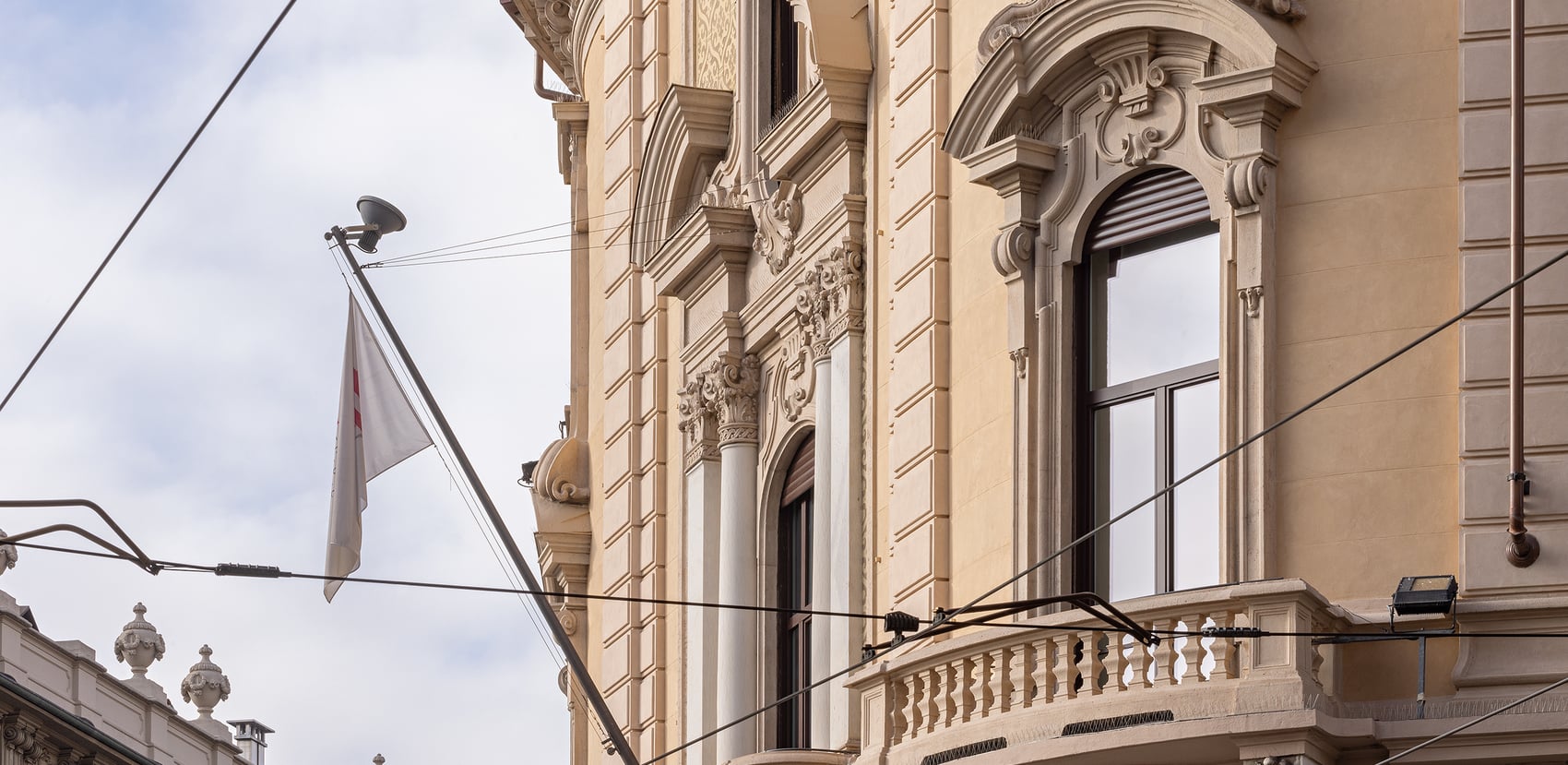
Double-sash window door with fanlight and roller shutter – everything fits perfectly together.
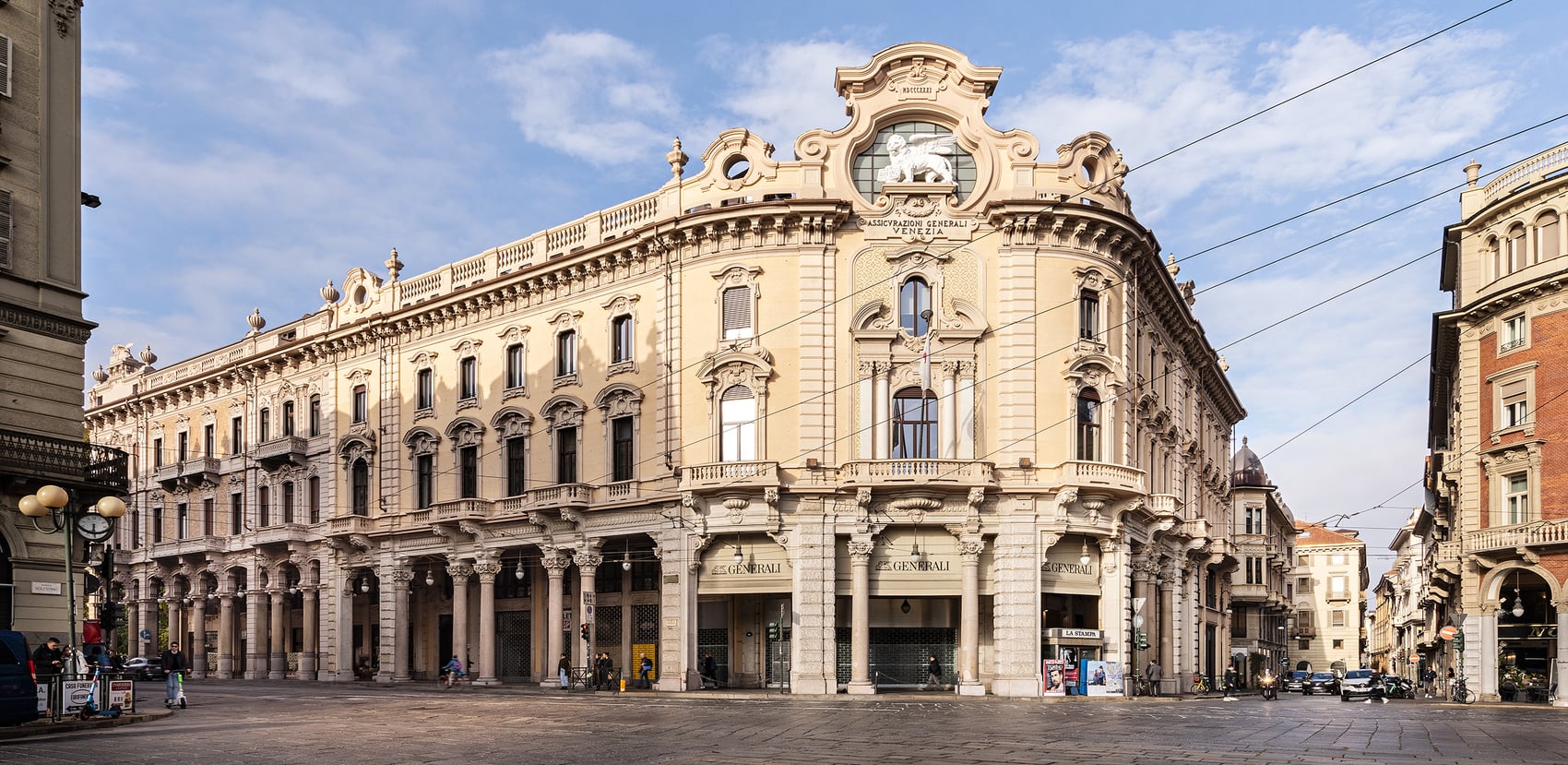
Aesthetically, the historic look was preserved – and functionally, everything is to the latest standards.
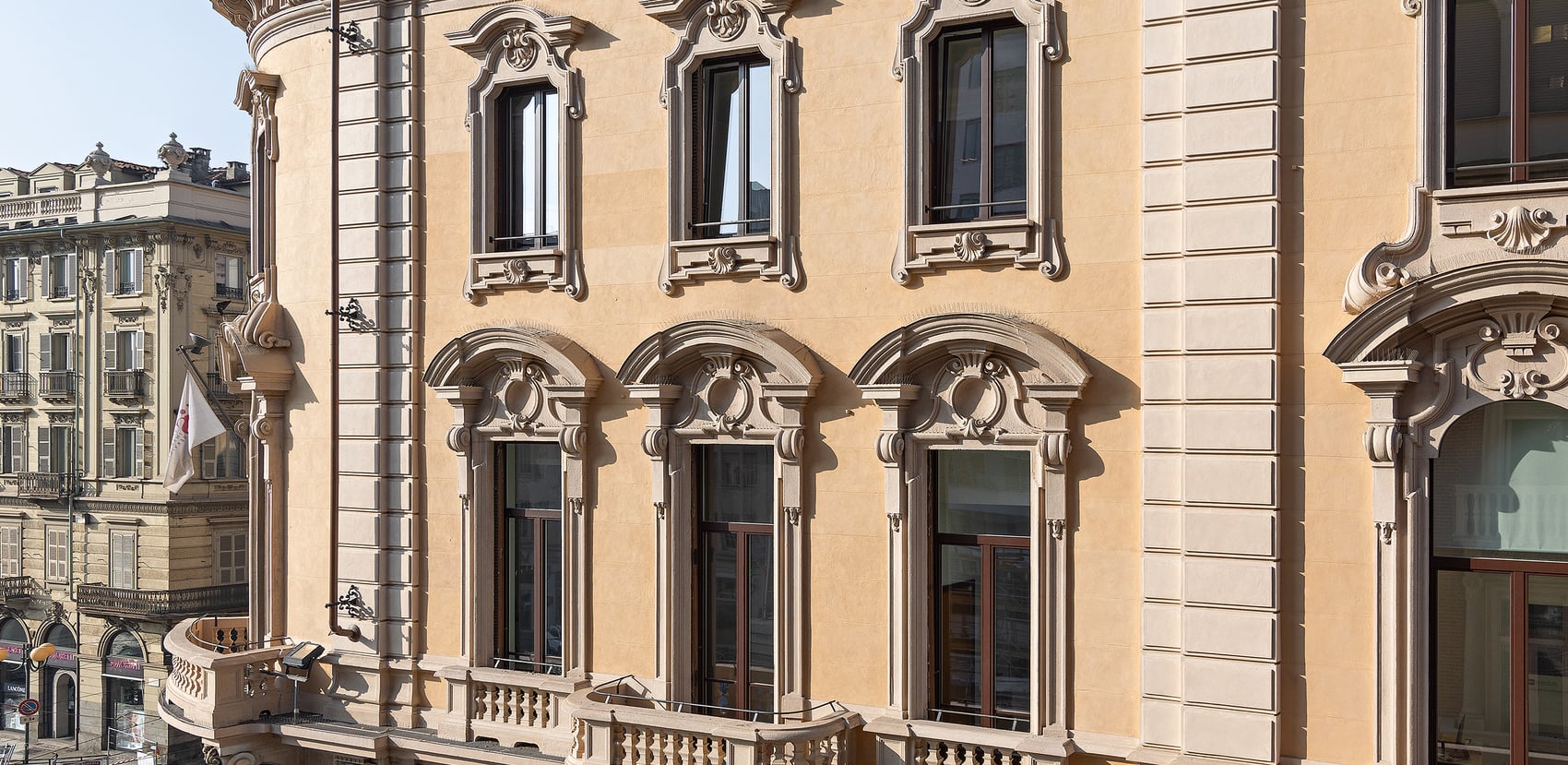
New windows, historic look.
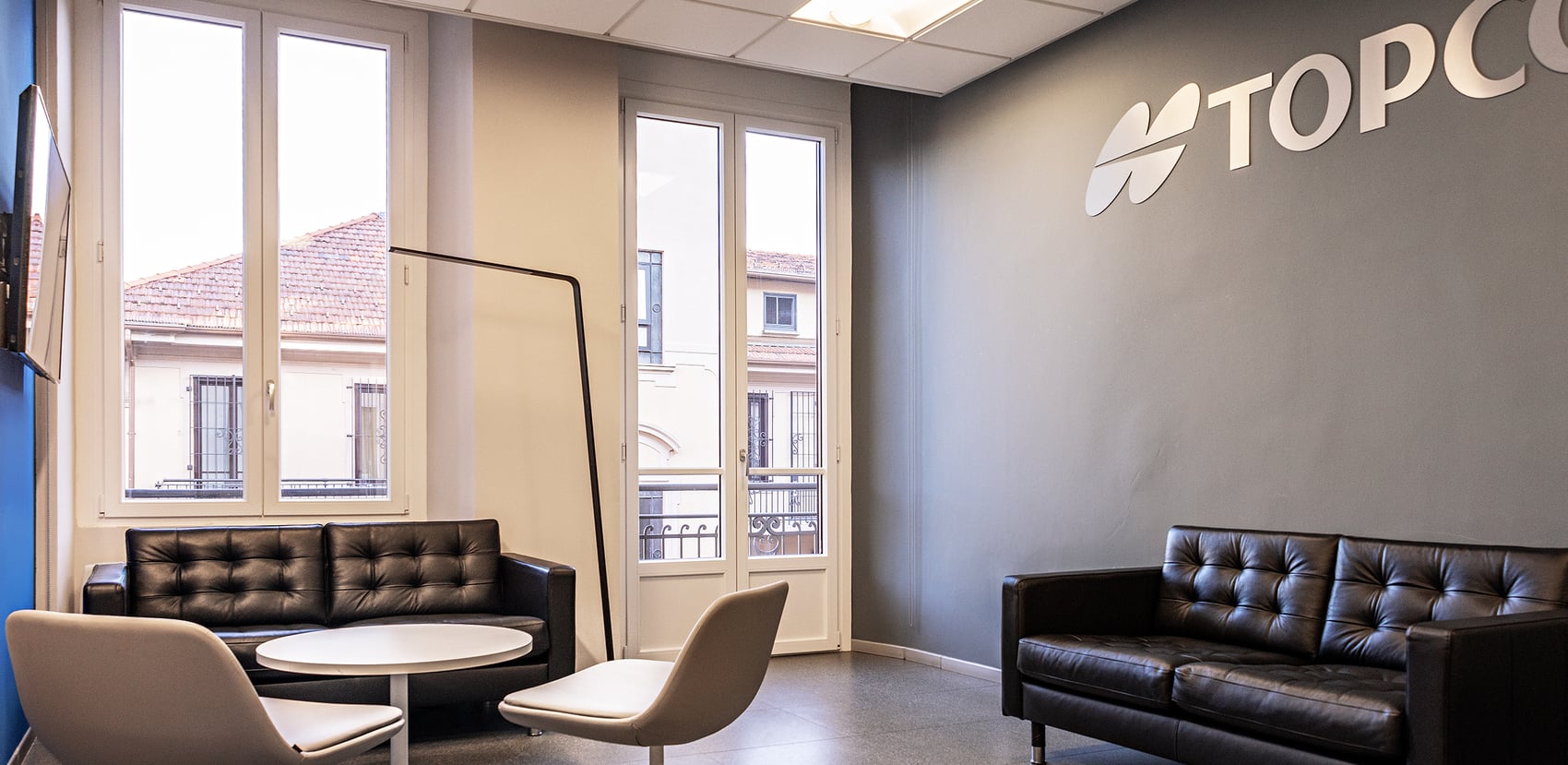
Double-sash window door with panels flattened at the bottom.
Still want more?
See here for further interesting reading matter.
